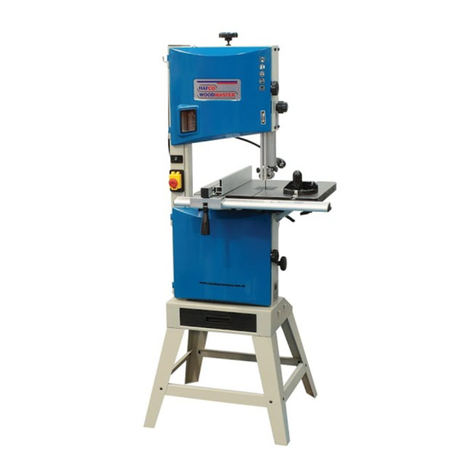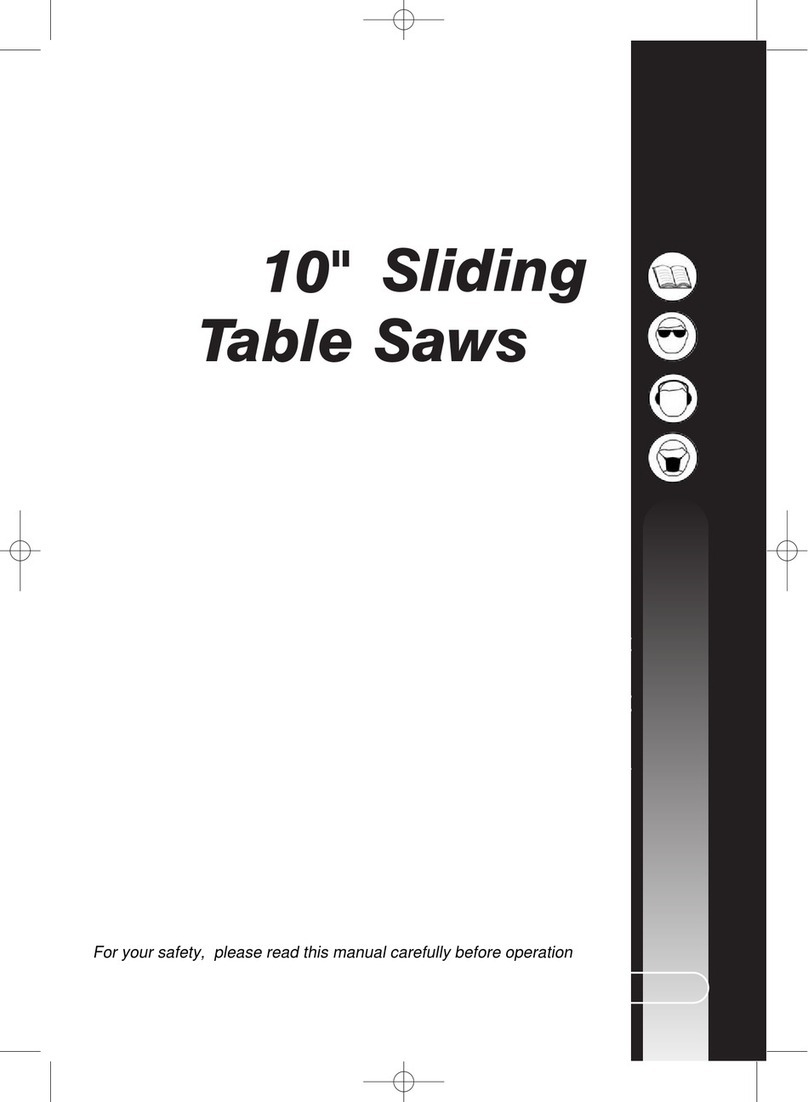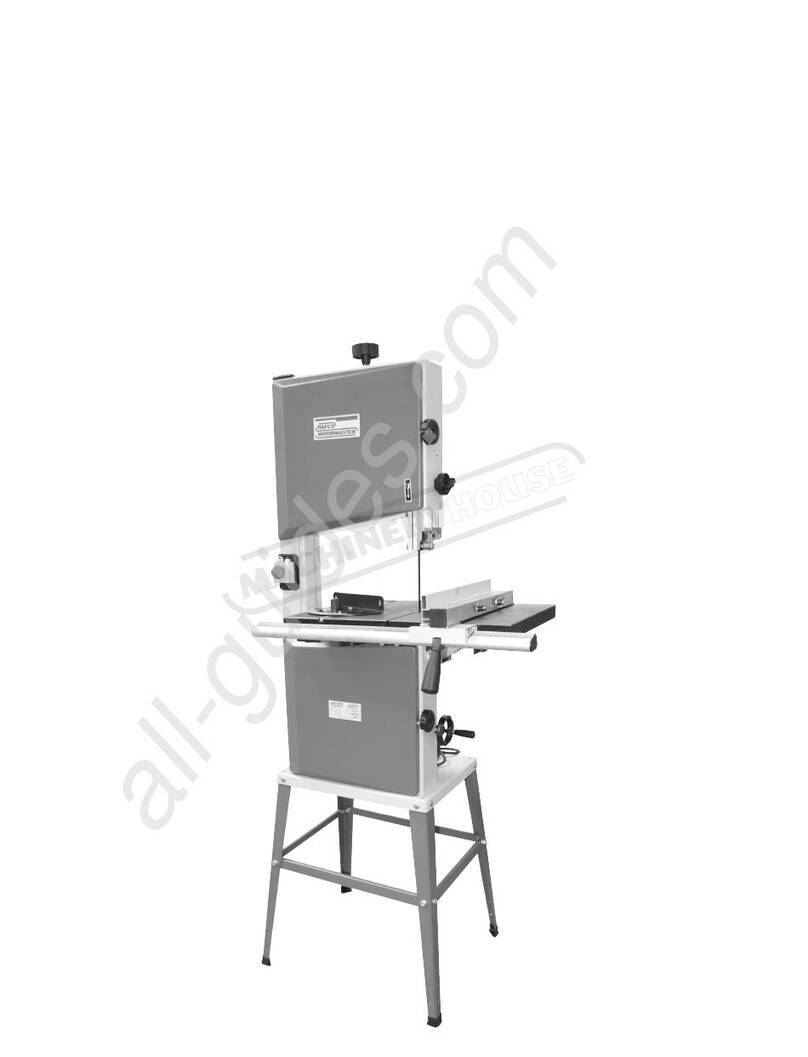
7
OPERATION MANUAL
Make sure the guard that is in position is in good working condition, and guards the
machine adequately before operating any equipment or machine. Check and adjust all other
safety devices.
Make sure the equipment is properly grounded before use.
Check that keys and adjusting wrenches are removed from the machine before turning on
the power.
Inspect stock for nails or other materials before cutting, planning, routing or carrying out
similar activities.
Make sure that all machines have start and stop buttons within easy and convenient reach
of an operator. Start buttons should be protected so that accidental contact will not start
machine.
Ensure that all cutting tools and blades are clean, sharp, and in good working order so that
they will cut freely, not forced.
Turn the power o and unplug the power cord (or lock out the power source) before
inspecting, changing, cleaning, adjusting or repairing a blade or a machine. Also turn the
power o when discussing the work.
Use a “push stick” to push material into the cutting area. Jigs are also useful in keeping hands
safe during cutting procedures. Keep hands out of the line of the cutting blade.
Always use a push stick for pieces less than 30 cm in length, or for the last 30 cm of a longer
cut. Use a push stick to remove the cut piece from between the fence and the blade.
Clamp down and secure all work pieces when drilling or milling.
Use good lighting so that the work piece, cutting blades, and machine controls can be seen
clearly. Position or shade lighting sources so that they do not shine in the operator’s eyes or
cause any glare and reections.
Ensure that the oor space around the equipment is sucient to enable you to machine
the size of work piece being processed safely without bumping into other workers or
equipment.
Woodworking machines should be tted with ecient and well-maintained local exhaust
ventilation systems to remove sawdust or chips that are produced.
Electric power cords should be above head level or in the oor in such a way that they are
not tripping hazards.
Keep work area free of clutter, clean, well swept, and well lit. Spills should be cleaned up
immediately. Floor areas should be level and non-slip. Good housekeeping practices and
workplace design will reduce the number of injuries and accidents from slips, trips, and falls.
Do not wear loose clothing, work gloves, neckties, rings, bracelets or other jewelry that can
become entangled with moving parts. Conne long hair.
Avoid awkward operations and hand positions where a sudden slip could cause your hand
to move into the cutting tool or blade.
Do not remove sawdust or cuttings from the cutting head by hand while a machine is
running. Use a stick or brush when the machine has stopped moving.
Do not use compressed air to remove sawdust, turnings, etc. from machines or clothing.
Do not leave machines running unattended (unless they are designed and intended to be
operated while unattended). Do not leave a machine until the power o is turned o and
the machine comes to a complete stop.
2.1 GENERAL WOODWORKING MACHINE SAFE PRACTICES



































